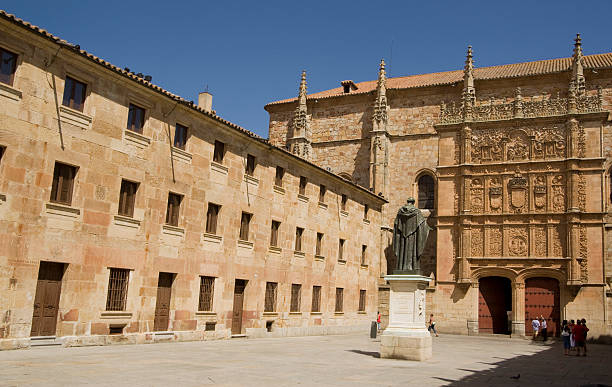
Gabriel Gonzalez
Student Life Editor
Salamanca, the “Golden City” of Spain, is opening up to all ESU students for a study abroad program this summer. Partnering with the University of Salamanca, the Office of International Programs is preparing to send students over the Atlantic Ocean and onto the Iberian Peninsula, where students will immerse themselves in another culture while they further their education.
According to spain.info, the University of Salamanca, founded in 1134 and given a royal charter in 1218, is one of Spain’s oldest institutions. The city around it is just as ancient. Orange-tiled roofs, alleyway streets and Romanesque architecture are emblematic of the city’s cultural and historical identity. And Madrid is only two hours away by train. Since the city is so tightly laid out, it’s also walkable.

“You’re only young once. That cliche is very true,” Dr. Annie Mendoza, professor of modern languages, says. After studying abroad in Madrid and in Brazil, she had nothing but glowing praise to offer. “That was a life-changing experience for me.”
Visiting the University of Salamanca website, ESU students can find courses to register for the summer semester. They can last two, four or even six weeks at a time. Discussions with Dr. Annie Mendoza or Jeffery Ruth, department chair of modern languages, philosophy, and religion, will decide on the number of credits. And after, Steve Ives, director of the Office of International Programs, will work to have the credits transferred back.
Spanish majors have the most to gain, but studying abroad could provide for six to nine of the 18 credits necessary for a Spanish minor. What’s more, these credits could be acquired at an accelerated rate.
And the pricing is very reasonable. Spain subsidizes their higher education heavily when compared to the United States, resulting in reduced, affordable tuition. According to erudera.com, Spain also regulates them, so universities and colleges use the pay-per-credit format, which is where cost is determined by number of credits. Price information for each course can be found on the University of Salamanca website link above.
But just as an exercise: the average credit at the University of Salamanca costs 336 U.S. dollars, meaning six credits would cost 2016 dollars. But for a six-credit course at ESU, the price would be around 2500 dollars. Big difference.
Ives also notes that you can’t swim across the Atlantic. Plane tickets will factor into the cost. But the Office of International Programs is more than happy to help students look for affordable ticket prices, which average around 1000 dollars.
Accommodations? The University of Salamanca also hosts a homestay program and dorm housing at different packages. It is recommended to homestay, where one can fully immerse oneself in the culture and people of Spain.

Dietary restrictions can and will be accounted for.
The process to get involved is quite simple. First, talk to professors like Mendoza or Ruth, or visit the Office of International Programs for more information. If it’s still appealing, Ives provides traveler’s insurance with the University of Salamanca, paperwork and logistics, flight assistance, maps of train routes and tickets, and helps when deciding on homestays or dorms. When all that is worked out, a student then meets with Mendoza or Ruth to decide on the amount of credits.
“You look at everything the U.S. way,” says Ives. “The correct way. Though it’s not always right. But you can really open your mind: become a global citizen.”

